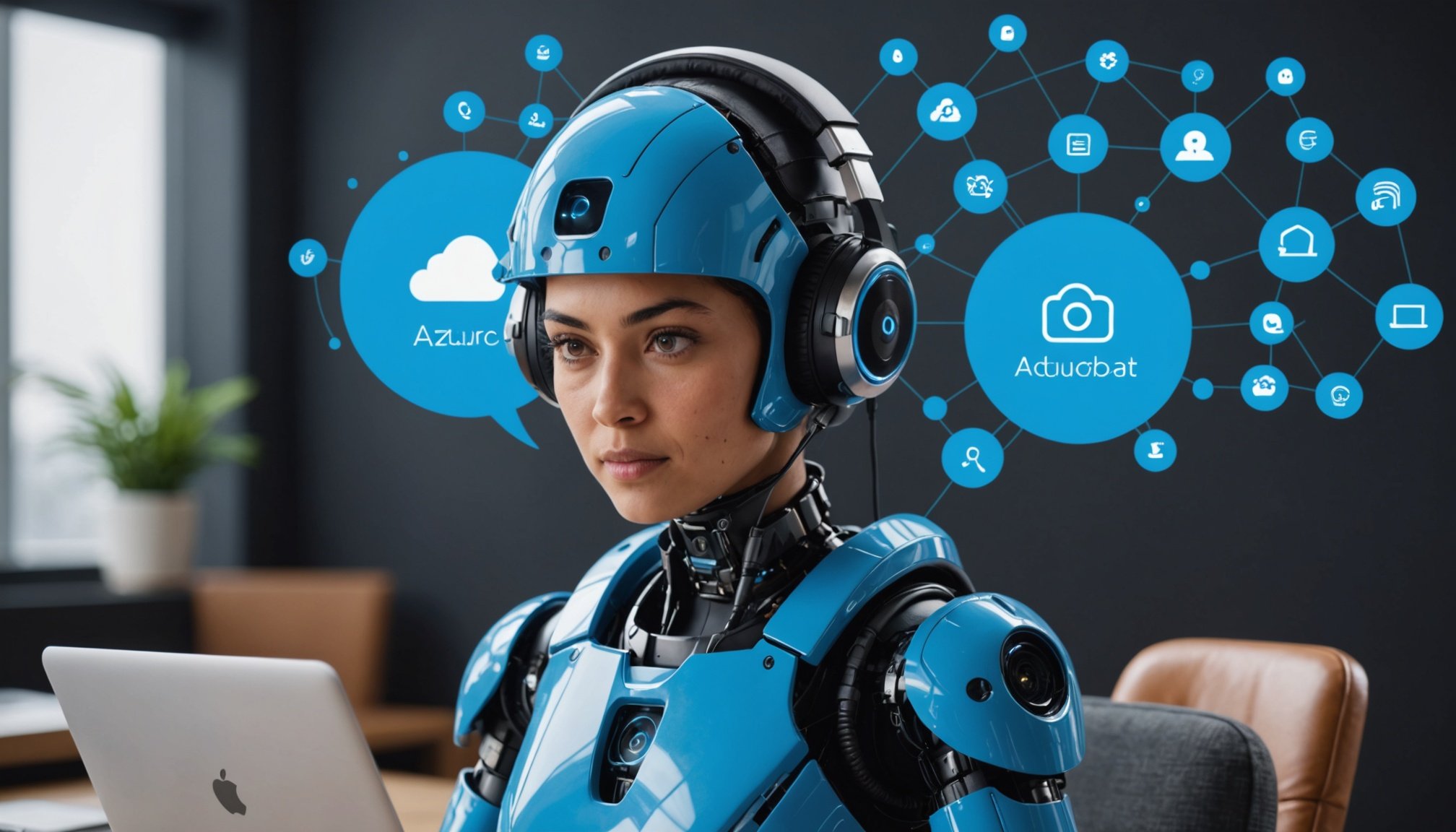Understanding Natural Language Processing in Chatbots
Natural Language Processing (NLP) is a pivotal technology in the evolution of chatbots, enabling them to comprehend and generate human language effectively. By integrating NLP, chatbots significantly enhance user interaction by interpreting the nuances and context of language, leading to more engaging and dynamic conversations.
In the past, traditional chatbot systems faced numerous challenges, primarily due to their limited understanding of human language and inability to maintain seamless conversations. Users often found these interactions frustrating, as chatbots could not efficiently process language variations or handle complex queries. This lack of flexibility restricted their functionality and diminished user satisfaction.
Also to read : Elevate Your Cloud Data Warehouse Efficiency: Proven Strategies for Unmatched Performance
However, advancements in NLP technology have revolutionised this landscape. These developments have empowered chatbots to provide sophisticated language comprehension, improving both chatbot functionality and user engagement. In designing chatbots, focusing on improving user interaction is paramount. This involves creating a system that not only understands the user’s intent but also adapts to varied conversational contexts.
Expanding on NLP can further enrich user interaction, ensuring chatbots deliver personalised experiences and fulfil user expectations. By leveraging NLP, developers can create chatbots that are not only more efficient but also more empathetic and relatable, addressing user needs innovatively.
Also to see : Effortless Azure Infrastructure Setup: Your Comprehensive Automation Handbook with Azure DevOps
Best Practices for Implementing NLP in Chatbots
Incorporating NLP into chatbots involves more than just initial setup; it requires ongoing effort to enhance user experience and maintain chatbot functionality. Continuous training and updating of NLP models are crucial practices. This ensures chatbots understand evolving language patterns and user intents, thus delivering accurate and relevant responses. Regular updates keep the chatbot in tune with the latest NLP advancements and user expectations.
Optimization techniques play a significant role in enhancing user experience. By designing conversations that flow naturally, bots can simulate human interactions more closely, fostering engaging user interaction. Thoughtful conversation design can also help chatbots manage unexpected queries more gracefully, reducing user frustration.
Implementing real-time feedback mechanisms allows for immediate performance assessments. By monitoring chatbot responses and gathering user feedback, developers can identify areas needing improvement and make data-driven adjustments. This proactive approach not only optimizes chatbot functionality but also empowers chatbots to meet users’ needs effectively.
Adopting these best practices not only sustains high performance but also enriches user interaction. As a result, chatbots can continuously improve, ensuring they remain a valuable asset in any digital interaction strategy.
Understanding Natural Language Processing in Chatbots
Natural Language Processing (NLP) plays a central role in transforming user interaction with chatbots, enhancing their overall functionality. NLP enables chatbots to understand and process human language, which is crucial for meaningful conversations. The primary goal of integrating NLP is to improve the chatbot’s ability to understand user needs, delivering responses that not only make sense but also cater to user expectations.
Before these advancements, traditional chatbots struggled with limited language comprehension, often leading to user frustration. These systems could not effectively handle diverse linguistic nuances or user interaction, resulting in an unsatisfactory experience. NLP has altered this by allowing chatbots to interpret language variances and context, providing users with smoother, more dynamic exchanges.
The importance of a well-designed user interaction cannot be overstated, as it directly impacts the success of a chatbot. By focusing on improving chatbot functionality through NLP, developers ensure interactions are more engaging and adaptable. As chatbots continue to evolve, the emphasis remains on creating empathetic, human-like conversations that genuinely resonate with users’ evolving expectations. Engaging and responsive chatbots built on robust NLP frameworks can revolutionize digital interactions, making them more intuitive and satisfying.
Introduction to Azure Cognitive Services
Azure Cognitive Services represent a suite of AI tools designed to empower developers with cloud computing solutions. These services are pivotal for augmenting chatbot capabilities, providing cost-effective modules that simplify the development of sophisticated, AI-driven applications. By integrating these services, developers have access to a broad spectrum of APIs relevant to enhancing Natural Language Processing (NLP) in chatbots.
Key offerings within Azure Cognitive Services include text analytics, machine learning, and speech recognition, which collectively enhance chatbot functionality. By utilising these tools, developers can significantly improve user interaction dynamics, ensuring chatbots engage users with human-like understanding and responses. The cloud computing infrastructure behind Azure enables scalable solutions, making it an economical choice for businesses of all sizes seeking to leverage AI technology.
Essential to this approach is the implementation of Azure’s comprehensive APIs, each contributing to different aspects of NLP. These tools facilitate advanced language comprehension and interaction capabilities, tailoring chatbot experiences to specific user needs. Ultimately, Azure Cognitive Services enable the creation of more intuitive and efficient chatbot systems, reinforcing their role in innovative AI solutions.
Integrating Azure Cognitive Services for Enhanced NLP
To integrate Azure Cognitive Services effectively, developers should follow a structured approach, focusing on key elements such as setting up Azure APIs and adhering to technical guidelines. Azure APIs provide robust tools for improving NLP in chatbots, enhancing both chatbot functionality and user interaction.
Setting Up Azure Cognitive Services
Begin the integration by registering for an Azure account and creating a Cognitive Services resource. This setup process involves selecting service endpoints and obtaining API keys. Key considerations include understanding your chatbot’s specific needs and choosing the right API features to enhance chat functionality. Testing the API connection ensures smooth communication between the chatbot and the Azure platform, enabling reliable data processing.
Utilizing Language Understanding (LUIS)
Implementing LUIS (Language Understanding Intelligent Service) is pivotal for refining chatbot conversations. Train LUIS models by feeding them diverse example phrases, enabling the chatbot to accurately predict and respond to user intents. Regular evaluation through analytics ensures the LUIS system remains effective and responsive. Optimal use of LUIS transforms chatbots into intelligent conversational partners, significantly improving user interaction.
Real-World Applications of NLP in Chatbots
Natural Language Processing (NLP) significantly enhances chatbot functionality, making it invaluable across diverse industries. By enabling chatbots to understand and respond to human language intuitively, businesses can offer more personalized services and support. Key sectors such as healthcare, finance, and e-commerce are already leveraging NLP for more effective user interaction and engagement.
In healthcare, NLP-powered chatbots are used for patient triage, providing quick responses to health inquiries and managing appointment scheduling. This allows healthcare providers to improve service efficiency and patient satisfaction. Chatbot applications in finance involve client interactions like handling routine banking transactions and providing financial advice based on user data, enhancing both security and convenience.
Retail companies utilize chatbots for personalized customer experiences, curating product recommendations based on consumer preferences. Additionally, chatbots facilitate seamless user interaction by assisting in the customer journey from inquiry to purchase, thus boosting sales and customer loyalty.
Innovative NLP chatbot use cases extend beyond customer service, enabling dynamic learning tools and interactive digital assistants in educational and corporate environments. Future trends suggest even more immersive integrations of NLP, potentially redefining digital communication through enhanced conversational capabilities.










